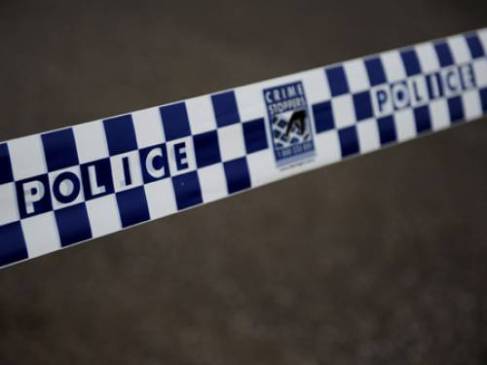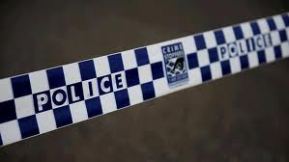
On the go: Eloise Arnold has up to three protein shakes a day. Photo: Peter Rae
Australian teenagers are being lured into buying dangerous protein powders that are being sold over the internet, while cases of hospital admissions for high heart rates, dizziness, vomiting and even death have been attributed to some protein powders.
A boom in sports foods has led to a free-for-all on the internet for protein powders that are often made and distributed in unknown circumstances with mystery ingredients.
Experts are urging consumers – including body-conscious teenage boys, gym junkies, body-builders and people trying to lose weight – to buy only reputable brands and check all labels carefully.

All natural: Guy Lawrence with his own protein powder that he is now shipping to the US and Canada. Photo: Dallas Kilponen
This follows the NSW Food Authority’s investigation last year into supplementary sports foods that led directly to the banning by the Therapeutic Goods Administration of the ingredient 1,3-dimethylamylamine (DMAA), found in some of the powders.
Director of enforcement and compliance at the Food Authority Peter Day said: “It’s very hard to track down those products which are not bought from store fronts.
”We found a number of hospital admissions of people with a very high heart rate, dizziness, stomach ache and vomiting from the misuse of products.”
Risks associated with DMAA include high blood pressure, psychiatric disorders, bleeding in the brain and strokes. In August last year, the West Australian Coroner found that a fly-in-fly-out mine worker died from taking DMAA, which he had bought over the internet.
Yet even without the presence of DMAA, some protein powders have been known to have an adverse effect on health, with the British Dietetic Association saying high levels of additional protein over a period of time can cause kidney and liver damage.
The popularity of consuming protein powders, commonly mixed with either water or milk as a quick drink, has taken off in recent years.
No precise figures exist but $80 million was spent by Australians last year on sports foods, a rise of 27.7 per cent over 2011.
Many of the protein powders contain synthetic chemicals, sugars and artificial flavourings, as well as the milk isolates or concentrates that make up the usual whey protein.
As a result, a number of consumers have reported side-effects, whether from the chemicals or from allergic reactions to contents.
“Some people think if it’s good to take two scoops, then four scoops will be even better,” Mr Day said. “They don’t read the instructions and end up with a high heart rate and the risk of a stroke.”
Melbourne mother of two-year-old twins Katerina Suszko, 36, started drinking one for lunch every day instead of eating a meal to try to lose weight, as well as a second one later in the day as a snack.
“But straight away I’d get a horrid, horrid ache in my stomach, and I’d be bloated and gassy,” Ms Suszko said. “I’d look like I was four to five months pregnant. I think I had a reaction to the sweeteners that many used, as well as the casein [milk proteins].
”But it’s hard to warn people that they could get a bad reaction until they do. It’s like telling smokers cigarettes are bad; they won’t believe you.”
Rockhampton health food shop worker Belinda Hotzhauser, 22, also had a bad experience with a sample of a new product. When she drank it, she felt sick and bloated, but hadn’t noticed that some had spilt on to her neck and chest.
“When I saw it, I wiped it off but it left a terrible red welt on my skin,” she said. “I couldn’t believe it. I then read the ingredients and there were so many artificial things in it, it was ridiculous. I wouldn’t touch that now. People have to be careful.”
Even where they don’t cause reactions, most have not been developed with still-growing teenagers in mind. Regular protein powders are now being taken by many teenage boys eager to put on muscle.
But, with the amount of sugar present in some of them, the powders just end up as expensive extra calories, associate professor in nutrition at the University of Sydney Jenny O’Dea said.
“They end up putting on weight and can end up fat,” she said. “A lot of them, we now recommend for weight gain.”
Nutritionists are also divided about the usefulness of protein shakes. The head of sports nutrition at the Australian Institute of Sport Louise Burke said they had a place as the loss of muscle mass was becoming a big health issue in the community.
Also, people didn’t tend to eat protein evenly all through the day.
“They don’t eat protein for breakfast or lunch, then they have half a cow at dinner,” she said. “That’s one huge serve at night, but it’s important to have protein through the day, and some people don’t have the time to make sure they have something in the fridge and cook it. So it’s protein in a very convenient form.”
But some people took things too far, she said and had them instead of proper meals.
“They can be potentially dangerous and people should be careful that they haven’t been contaminated with banned substances, either hormones or stimulants, by mistake, or deliberately. They should look at labels carefully.”
Foodwatch’s Catherine Saxelby doubts most people need the extra protein. The National Health and Medical Research Council’s dietary guidelines recommend an intake of 40 to 50 grams of protein a day – the size of one piece of steak plus a wedge of cheese – but the average protein consumption in Australia is 100 grams for men, and 75 grams for women.
“Most of us consume more than we need so, if we want more, why not have an extra egg, a glass of milk or a bigger piece of fish for dinner?” she said. “Extra protein can put a lot more stress on the kidneys, breaking down the protein and flushing out nitrogen.
“I think taking these powders is just a fad at the moment. It’s fashionable, especially with the CSIRO diet, and the Paleo and Dukan diets all stressing protein.”
Shock over harmful additives leads to business bonanza
Personal trainer Guy Lawrence was working with cancer patients when he decided to recommend protein powders, in combination with exercise, to help them recover their health.
But when he took a closer look at the labels of many of the powders on the market, he was appalled at what he found. ”They had so many chemicals, artificial sweeteners, fillers, thickeners and preservatives, I thought they couldn’t possibly be healthy,” he said. ”I was looking for something pure, with good ingredients, without all those potentially harmful additives.”
Despairing that he could find anything to fit the bill, he paired up with a friend, Stuart Cooke, and formed 180 Nutrition to produce their own protein powder, with natural ingredients including whey from grass-fed cows, almonds, flaxseed, sunflower kernels, pepitas and sesame seeds.
Selling online from their office in the eastern suburbs, it immediately took off and is now stocked in hundreds of health-food shops around the country. As well, they are getting orders from the US and Canada.
”It’s been incredible,” Mr Lawrence, 38, said. ”We found people really wanted a wholesome product, one they knew they could rely on, that’s clean and safe. In just the past 12 months alone, we’ve experienced 250 per cent growth.”
The pair has been approached by manufacturers in the US keen to produce their protein powders there. ”We’ve heard a lot of people talk about the chemicals in other protein powders causing bloating and skin rashes and other problems,” he said. ”But we’re proud that everyone seems so happy with our product.”
Regular shakedowns to stay on top
A keen gym-goer, Eloise Arnold drinks at least two, sometimes three, protein shakes a day.
She’ll usually have one – with blueberries and coconut water added – after she works out in the morning to help her recovery, then have one as a snack, and the other after dinner to keep her full until morning.
“The last one also helps me sleep well,” Ms Arnold, 23, said. She is also finishing exams before joining the police force as well as working as a fashion and events stylist.
“The earlier ones help with muscle tone, recovery after exercise … and weight loss.”
Ms Arnold said she was careful to buy a reputable home-brand. “I have a very busy lifestyle and they fit in well with my routine,” she said. “I’m always on the go.”


























